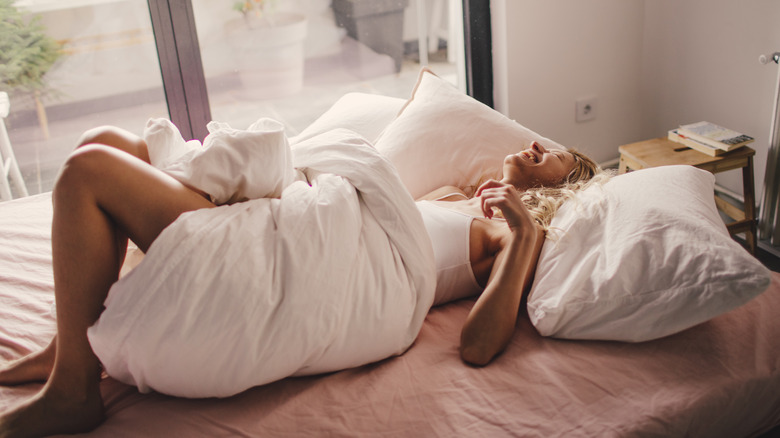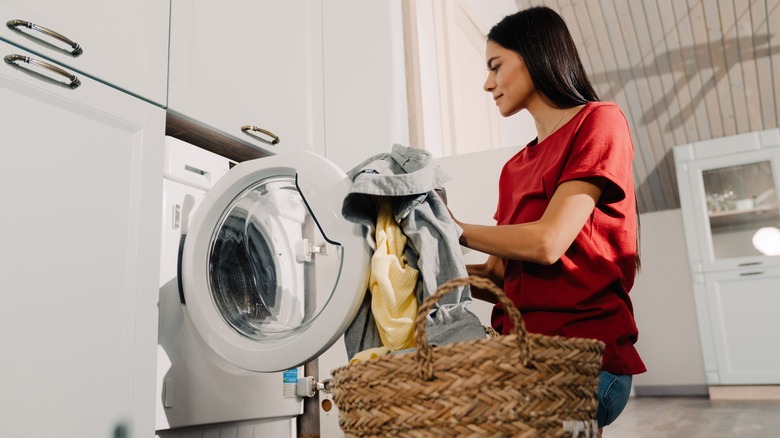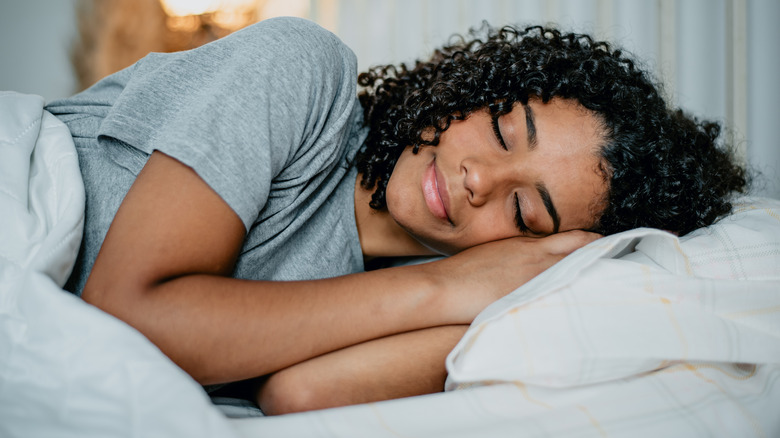You're Probably Not Washing Your Pillowcase Enough — And That's A Huge Problem
We may receive a commission on purchases made from links.
Sometimes examining life with a microscope can get alarming and, well, gross, especially when what's on the microscope is touching your face. Every night. We're talking about the ungodly amount of bacteria that accumulates from our hair and skin and is deposited nightly onto our pillowcases.
We'd guess that, like us, you'd prefer to minimize the tens of thousands of germs you sleep on every night too. In mattress retailer Amerisleep's pillowcase bacteria study, participants tested pillowcases and sheets for bacteria after sleeping on them for four weeks straight, and found that the number of bacteria had quadrupled from week one to week four. Yikes.
Awareness is always the first step before implementing a change. That change could be making peace with more frequent laundering, and buying a few extra pillowcases if you really want to reduce the bacteria problem. Pro tip: cotton damages and snarls hair. If you're going to buy a few extras, we recommend getting at least one satin or silk pillowcase. We dive into the pros and cons of the satin or silk pillowcase debate to help you decide which is best. Or you can go for cotton or bamboo to keep costs down.
Why infrequent pillowcase washing is a huge problem
There are a few reasons that under-washing is a big deal. Certified sleep coach Chris Brantner shared with Insider that even a week is too long and that we're actually better off swapping out our pillowcases every two days.
He added that "Most people don't realize that our hair holds more dirt in it than anywhere else on our bodies. And each night, we're mopping our pillowcases with it. Not only that, we are rubbing our faces all over our pillowcases as well, leaving behind sweat, oils, dead skin cells ... you name it." This accumulation contributes to acne and blackheads, so bedding could definitely be behind your breakouts.
Furthermore, a toilet seat has 17 thousand times less bacteria than a week-old pillowcase. And Amerisleep's study found and identified four types of bacteria, one of which causes pneumonia. Allowing your pillowcase, pillow, and sheets to host infectious bacteria can lower your immune system and create optimal conditions for bronchitis to flare up.
More info & our recommendations
In addition to bacteria, dirty pillowcases, sheets, and mattresses may attract dust mites or bed bugs. Dust mites can cause an allergic reaction (including asthma) and bed bugs bite, making sleep just about impossible. Hopefully, you're not at that stage. The Sleep Foundation recommends you consider replacing your mattress every six to eight years if you can. Use a zip-around mattress protector in the meantime, and zip-around pillowcase protectors too. You can launder those and your pillows more frequently as well.
Also, because you don't need the chemicals on your face that fabric softeners or dryer sheets leave behind, use wool or silicone dryer balls. They soften clothes, reduce static, and eliminate chemicals and fragrances that some people are allergic to. The takeaway: even though most of us wash our faces more frequently than the rest of our bodies, that doesn't eliminate the bacteria, but a ramped-up pillowcase washing schedule will help you rest easy and stay healthy.


